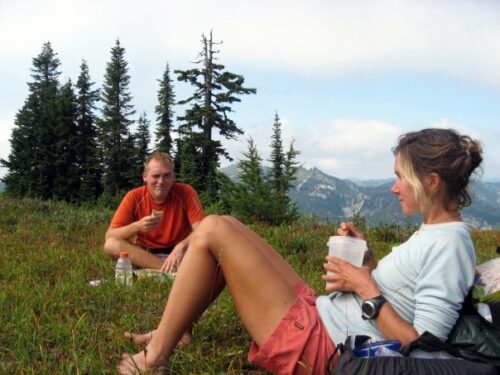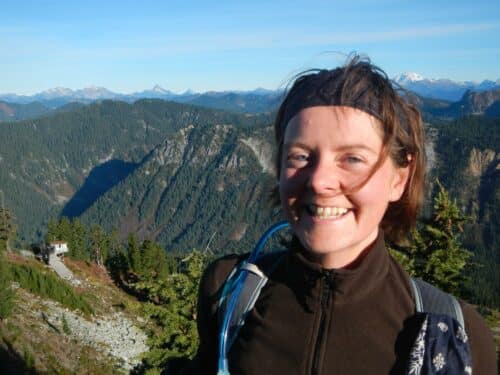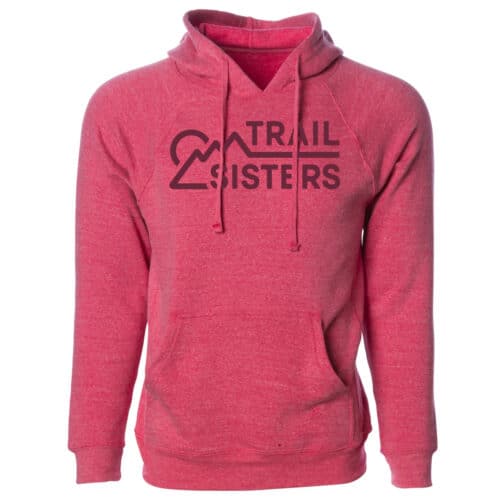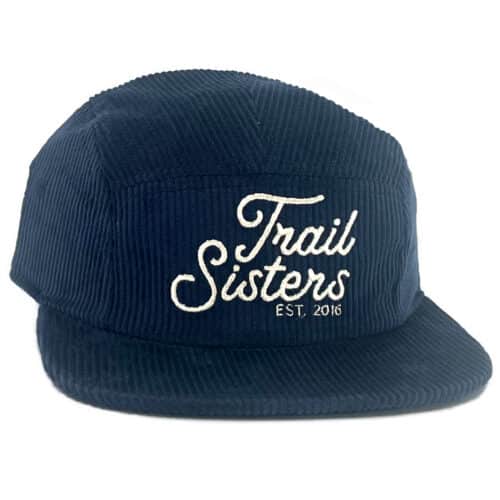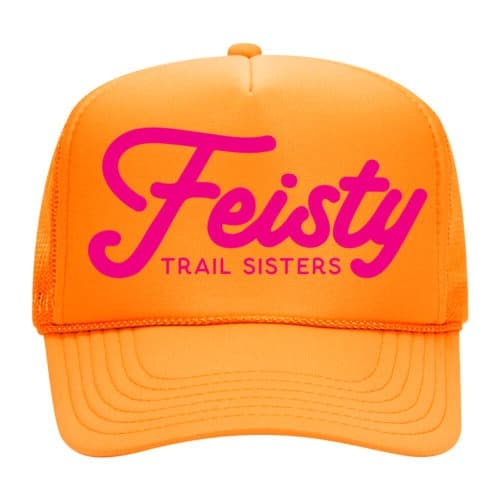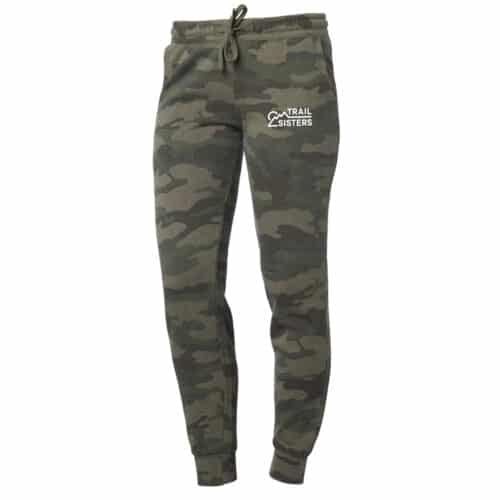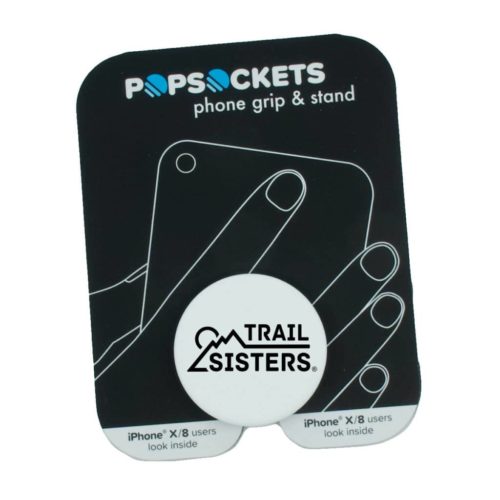Main Menu
Homepage / Words from the Wild / From Valley’s to Mountain Tops: Transitioning to Off-Trail & Summit Adventure
From Valley’s to Mountain Tops: Transitioning to Off-Trail & Summit Adventure

Heather Anderson is a National Geographic Adventurer of the Year, three-time Triple Crown thru-hiker, and professional speaker whose mission is to inspire others to “Dream Big, Be Courageous.” She is also the author of two hiking memoirs Thirst: 2600 Miles to Home and Mud, Rocks, Blazes: Letting Go on the Appalachian Trail and a preparatory guide to long-distance hiking Adventure Ready. Find her on Instagram @_WordsFromTheWild_ or her website wordsfromthewild.net
Share This Article!
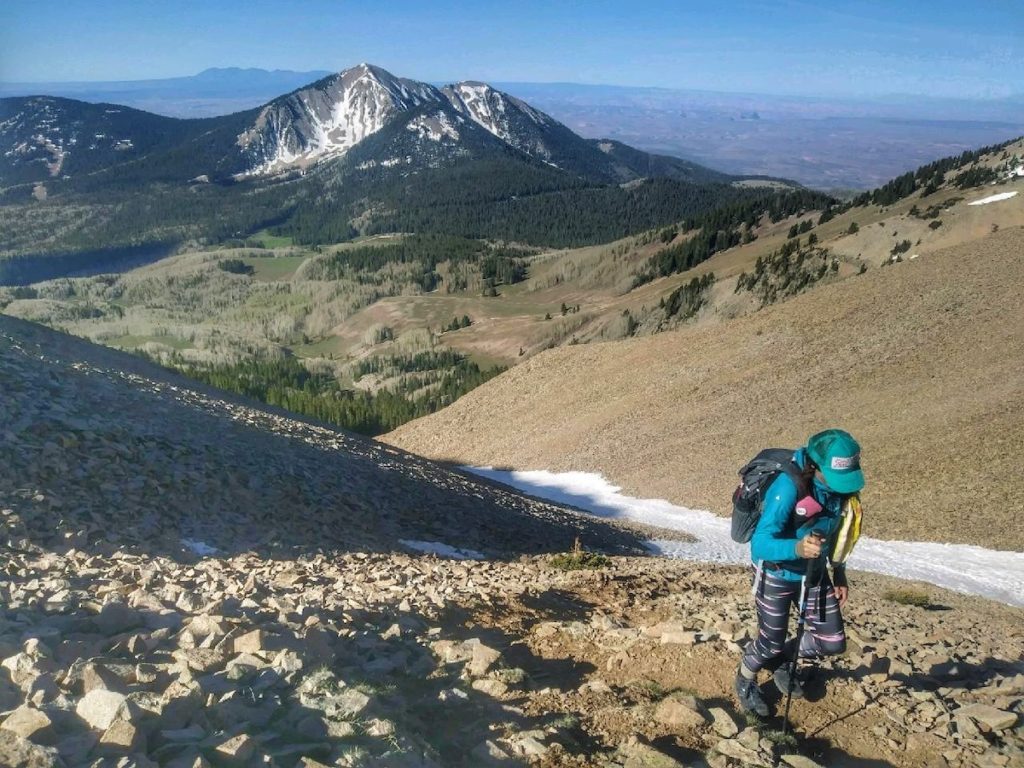

By: Heather Anderson
A few years ago, I began a new hobby. It built off of my many years as a backpacker and then trail runner and continued my journey to the places that had always fascinated me, yet I’d never been able to go.
I became a mountaineer.
While this transition was a natural outgrowth of the skills I’d been honing for decades, it was not seamless and without challenges. I had to greatly expand my skill set, equipment, and capacity for critical thinking in the backcountry. Below are some tips if you too want to expand your horizons to include off-trail summits in your activity list.
Bear in mind, that any time you leave the trail you are greatly increasing your objective hazard risk. Be certain that you are willing to accept these increased risks when you undertake this activity. The tips in this article are for information about what skills you’ll need to gain. I recommend taking a mountaineering basics course from a professional organization or guiding service and always traveling with others more experienced than yourself. Always ensure that you’re following land management guidelines with regard to camping, food storage, and limitations on off-trail travel just as you would for any other hike.
The main areas that off-trail summits differ from trail routes are increased or specialized knowledge of:
- Navigation
- Logistics
- Technical skillset(s)
Depending on your unique skillset prior to your foray into summit exploration, some areas may require far more dedicated learning than others. For me, I was already an extremely competent navigator and logistical expert. Channeling those skills into summit-specific endeavors was far easier than mastering the technical skill sets I needed (ropes, crevasse rescue, etc.). Your experience may be different.
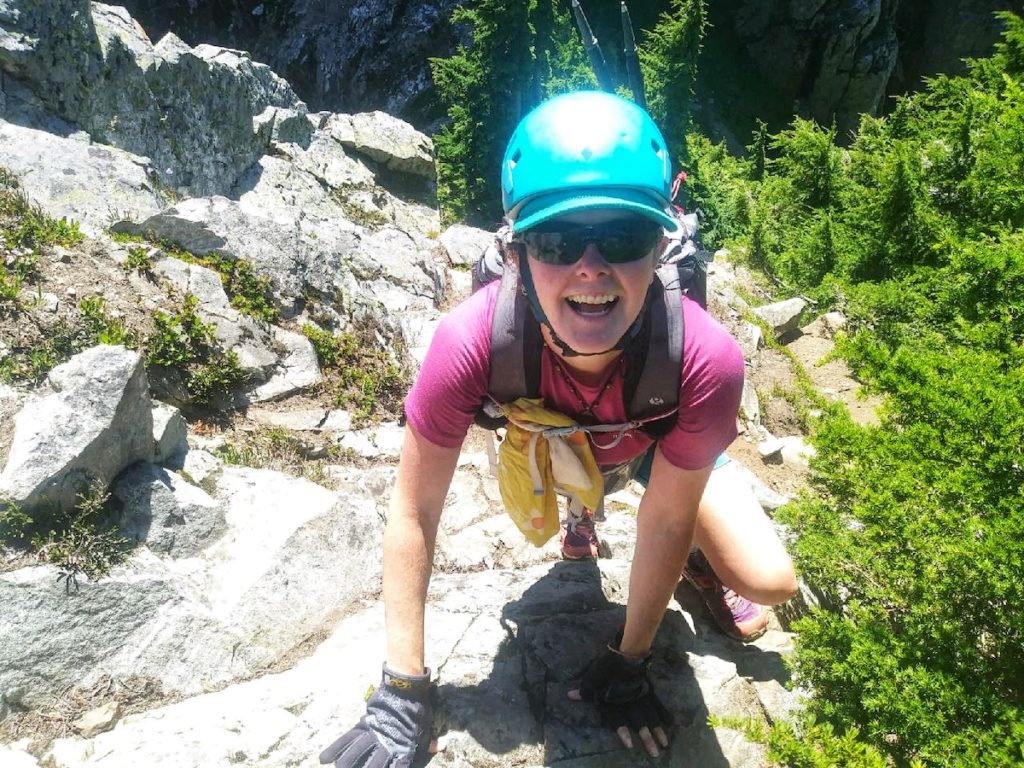
Navigation off-trail is much more difficult than on trail. There is no physical trail or junction guiderails to help you find yourself, even if you already know how to read a map. The topography often requires dead reckoning and the ability to use bearings accurately. Higher on the mountain, a single degree off or failure to adjust for declination can send you up the wrong gulley or ridge which can lead to disaster. Having a rock-solid map and compass ability is an absolute necessity.
It is also important to have and know how to utilize GPS technology for situations with narrow margins of error. However, if you’re utilizing a track log, be certain you know and trust it’s provenance. Just because someone publishes a line for what they did does not mean that they traveled the best route. Also, bear in mind that GPS has an error margin (which can be significant especially on devices like phones). Just like being slightly off with your compass, overriding your common sense with a GPS can send you the wrong way. Ultimately, you will need multiple forms of information to ensure you’re staying on route.
This leads us to logistics. Unlike backpacking—where logistics typically revolve around mileage, water sources, and campsites—summit logistics revolve around elevation gain and loss, route descriptions, and determining the type and technicality of terrain to expect. For mountain objectives, the creation of a beta packet is crucial. This includes your map and GPS track (if available), but also trip reports from other people who’ve traveled your route in similar conditions, photos of crux points on the route, descriptions of navigational markers (oddly shaped trees, certain colored rocks, etc.) and anything else that may be useful to know when you’re on the mountain. It can take practice to know what to include in your beta packet, but this is a situation where less isn’t more. The more information you have, the better. Often, things that seem like they will be helpful from home are not as useful in the field. By reading through as many reports as you can find, you will familiarize yourself with the route and the possible challenges that lie along it. This can help you assess whether you possess the gear and skills to even attempt it.
Common skills you may need for off-trail travel and summits include:
- Scrambling
- Rock Climbing
- Snow Travel and Glacier Rescue
- Reading Weather Patterns
- Bushwhacking
It is up to you to identify your proficiency with these assorted skills and choose peaks that fall within your abilities. If there are objectives you wish to pursue that fall outside your current skill set it’s imperative that you methodically gain the skills needed by building on solid foundations under the guidance of competent instructors. This can be through organizations such as the Mazamas or the Mountaineers, or it can be from friends who have gained these skills through proper instruction. Always practice skill building in safe areas with experienced partners.
Each of these skill sets is an entire instructional course (or several) of their own. As you work on them, you’ll discover the need to purchase specialized gear. Therefore, I recommend starting with basic scrambling and bushwhacking practice since these require the least investment of gear. You’ll want a helmet, appropriate footwear in addition to your navigational tools. Boots or extremely durable/sticky soled trail runners are key. Unlike trail hiking, as you advance in your scrambling your footwear can eventually become a life-or-death piece of equipment. Choose accordingly.
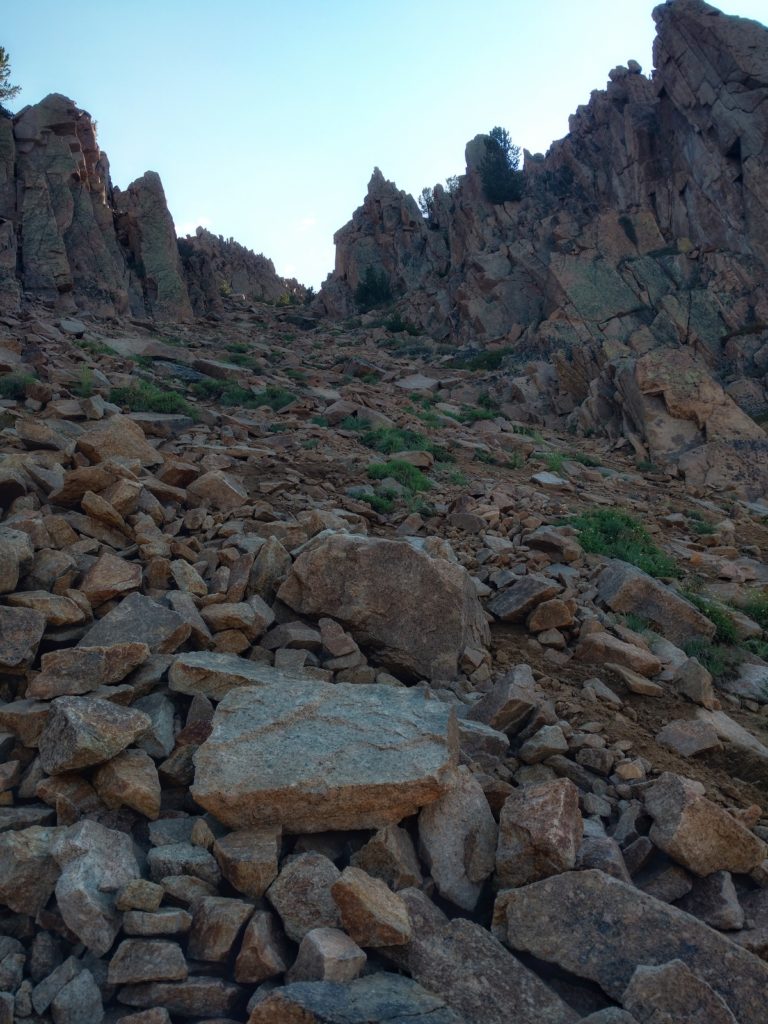
Technical rock, snow and glacier travel will require (among other things) climbing rope, harness, belay device, protection, carabiners, webbing, slings, snowshoes, crampons, ice axe, gaiters, glacier goggles, mountaineering boots, pulley, picket, shovel, probe, beacon, etc. These can become cost prohibitive, which is another reason to take courses and practice with others who have the gear until the time comes to purchase your own.
Hazard awareness is one aspect of off-trail and summit travel that overlaps with trail travel. Again, studying the route while creating a beta packet will help you asses objective hazards such as rock fall, crevasses, areas where you may fall, avalanches, etc. You should already be versed in elemental illnesses from your previous outdoor experiences, but if not, be certain you can identify heat illness, hypothermia, frostbite, and altitude sickness. Bear in mind that if your summit is snow or glacier covered extra care will have to be taken to prevent sunburn—including of your eyes which is called snow blindness—due to the reflection of UV rays off of the snow.
All of this may seem incredibly daunting, however with good mentors and dedicated practice you’ll be surprised at how quickly your skills and comfort grow. With that will come a sense of freedom to travel throughout the backcountry to places that you cannot access from trails alone.
Suggested resources/courses:
- Wilderness First Aid (nols.edu)
- Avalanche I Certification-AIARE (mountainschool.com)
- Basic Alpine Climbing Course (Mountaineers.org)
- Freedom of the Hills (book)
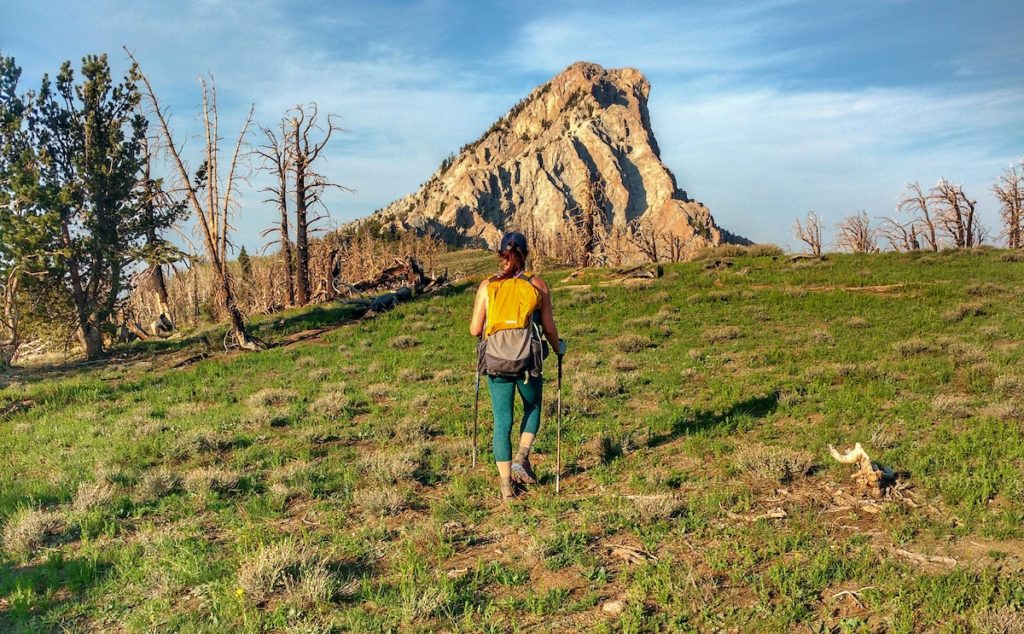
About the Author

Heather Anderson is a National Geographic Adventurer of the Year, three-time Triple Crown thru-hiker, and professional speaker whose mission is to inspire others to “Dream Big, Be Courageous.” She is also the author of two hiking memoirs Thirst: 2600 Miles to Home and Mud, Rocks, Blazes: Letting Go on the Appalachian Trail and a preparatory guide to long-distance hiking Adventure Ready. Find her on Instagram @_WordsFromTheWild_ or her website wordsfromthewild.net
Share This Article!


